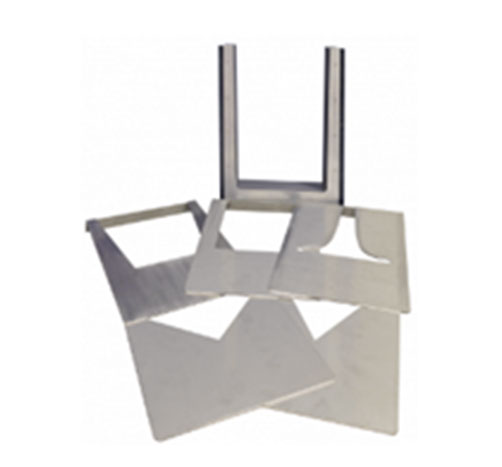
DESCRIPTION:
Set of Plate Weirs, Four Types(FM-1361.8)
Sharp-crested weirs are control structures causing a defined backwater. Additionally, they are often used to determine the discharge of an open channel.
Contains four different plate weirs as sharp-crested weirs. The fundamentals of flow over sharp-crested weirs are demonstrated with the rectangular weir with optional aeration. The other weirs are typical measuring weirs with defined openings: the opening of the Thomson weir is triangular, the opening of the Rehbock weir is rectangular and for the Cipoletti weir, it’s trapezoidal.
Specification
- 4 sharp-crested weirs for the experimental flume.
- Rectangular weir with optional aeration as sharp-crested weir
- Thomson weir, Cipoletti weir and Rehbock weir as measuring weirs
- Identical weir height for all weirs
- Holder for measuring weir to be studied
- Holder and rectangular weir both with lateral sealing lips
- Weir plates made of stainless steel
- Holder and rectangular weir made of PVC
Technical details
Thomson weir
– Triangular weir opening
Rehbock weir
– Rectangular weir opening
– Dimension LxWxH : 150x86x270 mm (rectangular weir)
Cipoletti weir
– Trapezoidal weir opening
Crump weir
– Upstream and Downstream section
Technical data
| Weir body made of PVC | ||
| Inclination (upstream) | : | 1:2 |
| Inclination (downstream) | : | 1:5 |
| Dimension LxWxH | : | 420x84x60 mm |
| Total weight | : | approx. 2kg |
Specification
- Crump weir for the experimental flume
- Weir body contour according to E. S. Crump
- Weir body with sealing lips
Experimentation
- Free and submerged overfall at the sharp-crested weir
- Effect of aeration on flow processes at plate weirs
- Nappe observation of separation at a sharp-crested weir
- Plate weirs as measuring weirs: determination of the discharge coefficient; comparison of the measuring weirs (cipoletti, rehbock, Thomson, Crump)
- Determination of the discharge
- Comparison of the theoretical and the measured discharge








